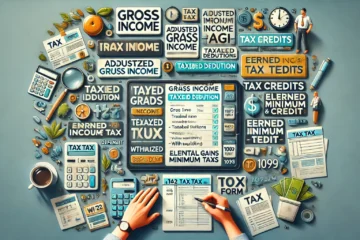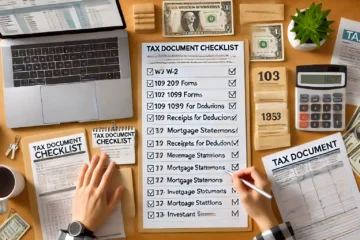When you borrow money—whether it’s for a credit card, personal loan, or mortgage—the interest rate you pay, known as the Annual Percentage Rate (APR), can have a big impact on your finances. But what exactly determines your APR, and why does it vary so much? If you’ve ever wondered why someone else might get a lower rate—or what you can do to improve yours to save money—you’re in the right place. Let’s break it down in a simple way.

What is APR, Anyway?
First, let’s quickly define APR. In simple terms, it’s the cost of borrowing money, expressed as a yearly interest rate. It includes the interest and fees, giving you a more complete picture of what the loan will actually cost. For example, if two credit cards both have a 20% interest rate, but one includes an annual fee, its APR will be higher, giving you a clearer picture of its cost. The lower the APR, the less you’ll pay over time.
Factors That Affect Your APR
Your APR isn’t random—it’s based on several key factors that lenders evaluate.
1. Your Credit Score
One of the biggest factors that affects your APR is your credit score. It shows lenders how likely you are to repay debt. The higher your credit score, the more likely you are to be seen as a reliable borrower, and the better your APR will be.
Why it matters: A higher credit score signals less risk for the lender, so they reward you with a lower APR. If your score is lower, you may face higher APRs as a way for lenders to cover the higher risk.
What you can do: Keep an eye on your credit score. If you’re working on improving it, make sure you pay bills on time, reduce high balances, and avoid opening too many new accounts. Over time, a higher score could even make you eligible for refinancing, which can help you secure a better APR.
2. Loan Type
The type of loan you’re taking out also plays a big role in determining your APR. For example, credit cards, personal loans, and mortgages each have different risk factors, so their APRs can vary widely. If you’re borrowing for a big purchase, the size of your down payment or the collateral you offer can impact your APR.
Why it matters: A larger down payment or valuable collateral reduces the lender’s risk, which can lead to a more favorable rate. Credit cards usually have higher APRs because they’re unsecured loans, meaning there’s no collateral if you don’t pay. In contrast, secured loans like mortgages or auto loans often have lower APRs since the lender can seize the asset if you default.
What you can do: If you’re borrowing for something big like a home or car, consider negotiating with lenders. A larger down payment or showing financial stability might lead to a lower APR. And if you’re comparing secured and unsecured loan options, make sure to shop around for lenders offering the best rates tailored to your situation.
3. Loan Amount and Term Length
The amount you borrow and how long you plan to take to pay it back can also influence your APR. Generally, smaller loan amounts with shorter repayment periods tend to come with lower APRs.
Why it matters: When you borrow a large sum of money over a long period, lenders are taking on more risk. This can result in a higher APR. Shorter loans are lower risk, and as a result, lenders are more likely to offer you a lower APR because they recoup their money faster.
What you can do: If you’re considering a loan, think about whether you can pay it off faster. Shorter loan terms can reduce your APR and save you money in the long run. However, make sure you’re comfortable with the higher monthly payments that come with shorter terms. Alternatively, if you’ve already taken out a loan, keep an eye on opportunities to refinance for a better rate as your financial situation improves.
4. Your Debt-to-Income Ratio (DTI)
Your debt-to-income ratio is a measure of how much of your monthly income goes toward paying debt. If you’re already carrying a lot of debt, lenders may consider you a higher risk and charge a higher APR.
Why it matters: A high DTI ratio suggests that you may have trouble making payments on additional loans, which increases the risk for lenders. Lower DTI ratios show you have more income available to manage new debt, which can result in a better APR.
What you can do: If you’re carrying a lot of debt, consider focusing on paying down existing loans before taking out new ones. Reducing your DTI can help improve your chances of getting a better APR in the future.
5. Economic Conditions and Market Rates
Sometimes, it’s not personal—it’s the economy. The broader economic environment also plays a role in determining your APR. Interest rates are influenced by things like inflation, the Federal Reserve’s actions, and general market conditions.
Why it matters: Interest rates fluctuate based on Federal Reserve policies, inflation, and market conditions. If rates are high across the board, you’ll likely see higher APRs, regardless of your creditworthiness.
What you can do: While you can’t control the economy, you can keep an eye on interest rate trends. If rates are low, it may be a good time to lock in a lower APR on a loan. Similarly, shopping around for lenders during favorable conditions could make a significant difference in the APR you secure.
Final Thoughts: It’s All About Knowledge and Planning
Understanding what affects your APR empowers you to make smarter borrowing decisions. When you know what lenders are looking for and stay informed about loan options, you can lower the cost of borrowing and reach your financial goals faster.
Remember, improving your APR isn’t always immediate, but there are steps you can take over time. Shopping around for the best rates, negotiating with lenders for better terms, and refinancing when your credit improves are all ways to manage and reduce your APR effectively.
Take control of your borrowing, and you’ll be setting yourself up for a healthier financial future.



0 Comments